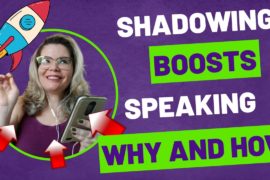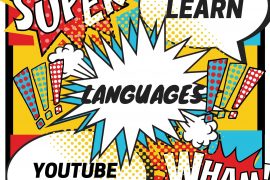Hi there!
You know when a person starts learning a new language what he needs to do first is to improve his vocabulary. So, talking about this, Anki is a perfect tool that will help you in your journey. Today I’m going to write how to improve your vocabulary using Anki. Before starting to dig into how to use Anki, I want to let you know the Anki is the best tool to improve your vocabulary that I ever saw.
If you use Anki to learn English, you might like these articles I’ve written about Anki:- How To Use Anki Cards to Learn English Effectively
- How To Add Audio to Anki with Awesome TTS
- How To Use Type Answer Anki Cards
- Do’s and Don’ts about ANKI to Spark your English
- How to get fluent with Anki
What is Anki?
Anki is a tool which works by flashcards. You add in front card what you want to learn and in the back card pieces of information about words that you are learning. This system is good because you can judge if the sentence is hard, good, easy or if you want to see it again on the same day. The judgment will provide when you will see the flashcard again. Learn more here.
How to start using Anki?
First all, you should create an account on Ankiweb. After that, you should download the software on your computer or an app on your smartphone. I recommend you download on both platforms. I really like to add new cards from a computer because I have more freedom to copy paste sentences from the dictionary.
When to use Anki?
You can learn new words that you added in your Anki in a lounge doctor’s room, in a bus station, in a hairdresser, whenever you have free time you can use it. The big deal is to create a habit to remember to use it in your free time instead of looking at social media. I’ve been using it for about 3 years, so I’ve already created this habit. Usually, I revise 100 cards in 30 minutes.
How much is it?
This fantastic tool is free, can you believe it? At least for android, online, and computer version.
How do I use Anki?
New words or expressions to learn come from articles on the internet, books, social media, magazines, and so on. Usually, when I see an unknown word while I’m reading immediately, I go to Oxford Learner’s Dictionary search for that strange word, copy and paste the sentence of example in my Anki. In the front card, I highlight the unknown word, in the back card I put the phonetic transcription, audio of the word, and the meaning in English (of course 🙂 ).
Anki has a tool to record, you can use it or use the website called “Sound of text.” The pronunciation of the word or expression is extremely important as you can identify the sound when you listen to podcasts, TV series, or conversations. Beyond knowing to pronounce it correctly.
Ah… you also can add images to your cards. Usually, I use this tool when I see the card a million times and don’t catch the meaning. So, I search for pictures on Google, and the problem is solved.
Your cards can be organized by decks. It means that you can create decks per subjects that you are learning. Each desk shows 100 flashcards to review and 20 new ones to play a day, this is the pattern, but you can change it in settings if you want to.

Advantages
1. You can synchronize your cards. Let’s suppose that you are on the bus station doing your Anki, but when you get home, you wanna use your computer, so you’re gonna do it from where you stopped. 2. It’s free. 3. The best way for learning new words and remind old ones.
Read more: Optimising Learning Using Flashcards: Spacing Is More Effective Than Cramming
Was this article useful? So share it with your friends. 🙂 Let me know on the comments section your opinion about Anki. Have you already used it? Have you liked it? See you in the next article.




2 Comments
Hello, I know Anki, is a ery usefull tool to lean vocabulary. Mionly doubt, is about to use only in english or portuguese too. For example to describe de meaning, is better use only english? Thankyou very much, I loved your blog.
Hey Antonio, I’m happy to know you liked my blog.
At the beginning of my learning, I used to add cards in Portuguese to explain the word I was learning, but after a couple of months, I started adding most of the cards(99%)in English. Just a few ones I put the meaning in Portuguese, just those ones I really couldn’t catch the meaning in English.